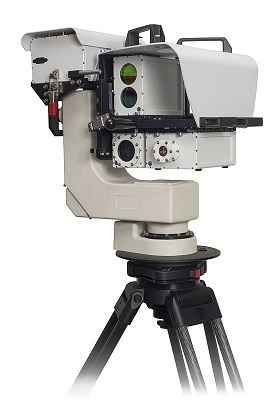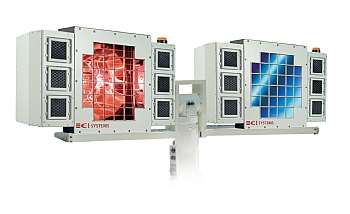Missile approach warning (MAW) systems have been around for decades after they were first used in the aftermath of the Second World War in the 1960s and their subsequent proliferation during the Cold War in the 1970s. Employed as a timely and efficient method to detect incoming missiles from beyond enemy lines – both on the air and from the surface – missile approach warning systems have helped countries protect their military forces as a form of defense in air combats, especially during times of crises and wars.
However, MAWs demand a lot of overhead when it comes to their testing and maintenance. Although the advancement in such missile detection systems has changed radically, especially after the arrival of infrared-enabled MANPADS or man-portable air defense systems, their testing infrastructure still needs extensive resources.
One way to limit these requirements and reduce the overall cost of maintaining MAWs is to use laboratory simulations. These are possible through missile warning system testing, a setup that simulates incoming missile radiation signature and helps MAWs to enact and test their counter processes in real time. Such testing setups can also work in conjunction with electronic countermeasures (ECM) to provide a holistic review of the missile warning system under test.
Here’s how missile warning system testers can help revolutionize the way such systems are kept up-to-date and even developed while reducing costs and resources.

CI Systems Missile Warning Systems Tester
Need for Missile Warning Systems Testing
Missile warning systems are mainly employed for self-defense. Statistics from the post-Second World War period to the late 1960s show that most of the aircraft that were lost to missile strikes were a result of infrared-based or similar missiles. A majority of these aircraft commanders were unaware of the approaching missile attack. Had they known or been tipped off about the attacks in any manner, they could have employed maneuver techniques, engaged countermeasures, or at best, activated self-ejection.
It may be worth noting that IR-guided missiles claimed the most number of aircraft because there were no warning systems then to detect them promptly and warn the pilots. The situation further worsened after the invention of MANPADS which could launch missiles into the air from land, mostly within short distances. It became even more difficult for aircraft to detect these, let alone respond with a counterattack.
All of this gradually led to the development of missile approach warning systems, a subset of avionics that both detects and warns of an incoming attack and activates any of the available countermeasures. They depend on passive sensor technology that targets and detects the plume that is typically created by a non-IR trailing missile. In most cases, the sensor is a cone-shaped addendum to the tail of an aircraft that can detect a missile attack from all directions. The sensor is connected to the extended MAW system, which is in turn connected to the ECM and other countermeasure systems available on the aircraft.
Over the years, there has also been some development in detecting satellite-based, ultra-long-range missile attacks deployed by enemy countries.
How Are Missile Approach Warning Systems Tested?
In the 1960s and 1970s, when missile approach warning systems were being developed, they were tested through trial-and-error methods. In almost all cases, the testing would happen on the field with aircraft flying at low altitudes and usage of missile beams that do not explode.
As noted above, there are two aspects to a MAW system. Firstly, it should be able to detect an approaching missile attack either through radar or some other form of detection. Once such a missile has been detected, the system also has to activate a countermeasure along with informing the pilot of the aircraft for human intervention. Out of these two, detection is often the most challenging part.
An aircraft may have all the necessary equipment to counterattack an enemy fire but for that it has to know about the attack and have time to prepare. In the 1960s, by the time an aircraft would detect an incoming missile, it would be too late.
This calls for the MAW systems to have a set of functional requirements such as:
- Quick detection
- 100% or near-100% accuracy in detection
- Quick response time (not more than a second)
- Low false alarm rate
- Accuracy in azimuth and missile elevation angle information
- Fully automated detection and counterattack design
In essence, the testers need to tackle three main types of missile attacks, namely pulse-doppler, ultraviolet, and infrared. Each has distinct characteristics, hence a MAW testing system that is capable of detecting all or most types of attacks is preferred. Most MAWs today work on the ultraviolet and infrared wavelength ranges, which are easier to detect with low false alarm ratios and quicker response times. However, this was not always the case.
Cost Considerations and Other Limitations of Live Testing
Such precision equipment that’s also light on the aircraft and fully automated can pose subsequent challenges. One of them is the cost to continuously test and upgrade them. With different types of artillery now being used in military combat, it is critical for even missile approach warning systems to update themselves.
MAW systems should also have a facility for human intervention. Although human intervention adds to the response time of the overall system, there has to be built-in functionality in the avionics for the commander to manage the system more effectively if and when needed.
Another critical area in the R&D of such systems is how they blend in with existing avionics. Since the cockpit has limited space, it is best to combine the human-machine interface of such MAW testers with the existing avionics controls. Every upgrade or improvement made to a system should have this consideration to avoid any overhead in terms of both cost and installation.
All of these pose challenges during testing and maintenance, which can be solved by using a cost-effective and -efficient method of laboratory testing.
Efficacy of Laboratory Testing of Missile Warning Systems
Modern lab-based MAW system testing equipment began to be operational in the late 1990s. As the demand for such detection and countermeasure techniques sprang, so did the need for testing systems that helped engineers across national defense and private companies keep the MAW avionics up-to-date. For instance, Lockheed Martin began experimenting with lab-based testing of missile warning systems in 1998.
The basic principle of such an equipment involves a mechanism that simulates an aircraft and missile projection. The sensors that are part of a MAW system are fed the simulated projectiles to see how they react and perform. Tens of hundreds of iterations are enacted across various angles and radiation power to rate the system and make corrections and add upgrades if any.
In some mechanisms, it is also possible to check whether the countermeasures thus employed by an aircraft during a simulation would have been effective. This gives an overall perspective of how a MAW system would perform on a flight.
Types of Missile Warning System Testers
There are different types of missile warning system testers available in the avionics market today. The variety largely depends on the missile range and type. These testers primarily depend on spectral radiance measurement to detect an approaching missile and activate the relevant countermeasures.
In the global avionics industry, missile warning system testers are broadly classified into two types:
- Handheld field testers
- Long range simulators
As the name suggests, field testers simulate the radial spectrum of handheld missile launchers like MANPADS. These projections are directed toward aircraft missile warning systems to see how they react and act out. These are mostly low-range systems that can be carried out in a small hangar or inside a lab.
On the other hand, long-range simulators provide dual-band simulation and are used to test more advanced missile warning systems, both for surface and air attacks. In comparison with field testers, they have a longer range and higher accuracy.
Examples of such MAW testers are handheld field tester MSS-UV and infrared threat simulator (IRTS) by CI Systems. The latter looks like a speed gun that needs to be pointed to an aircraft’s MAW sensors to gauge its performance and counteraction. The IRTS is a more robust system that can simulate the infrared spectrum of missiles approaching from as far as 5 kilometers. It is mostly used for advanced MAW testing and aircraft crew training. Such systems can offset environmental conditions and provide more accurate simulation for near-100% precision testing.
CI Systems infrared threat simulators (irts)

Other types of advanced MAW testers include:
- Ultraviolet Threat Simulators (UVTS) – for UV plume simulation with variable speed and range features. Read more >
- Laser-based Threat Simulators. Read more >
- SWIR Threat Simulators – simulates SWIR missile profiles based on a variety of parameters. Read more >
The development of laboratory-based missile approach warning system testers is a boon to the aviation and defense industry as they provide cost-efficient maintenance and upgrade solutions. Over the last decade, such systems by leading manufacturers such as CI Systems are also being used for further research and development, especially in developing electronic countermeasures.